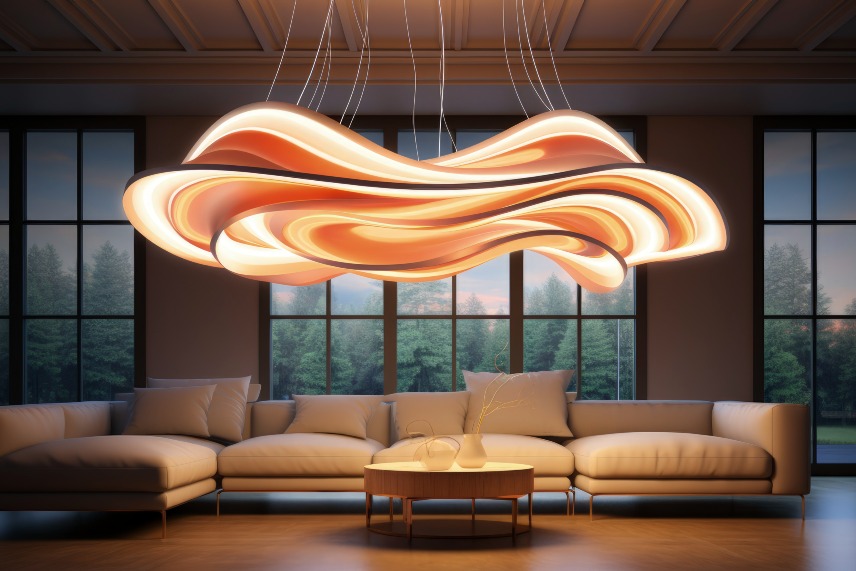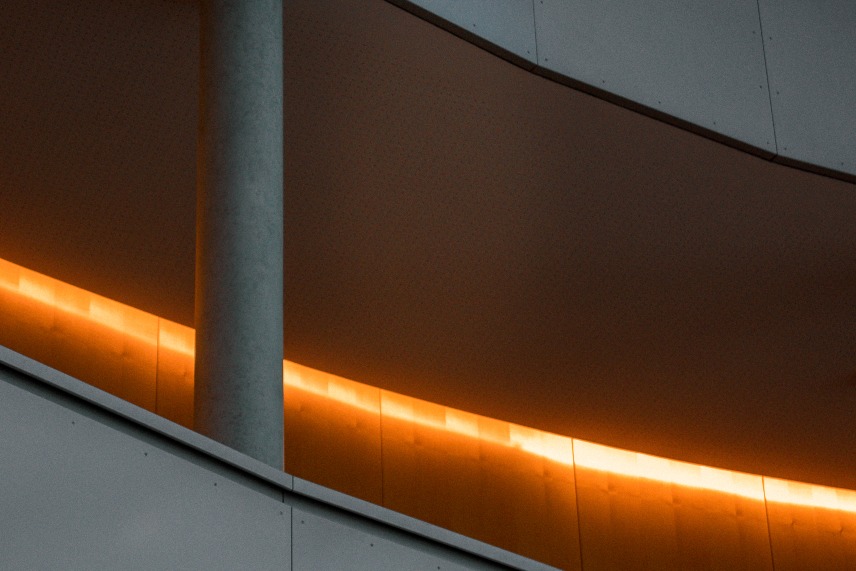- HOME PAGE
- / BLOG
BLOG

Lighting Techniques Trends for 2025
2025 marks a turning point where lighting evolves from merely “seeing” into a design language that defines atmosphere, identity, emotion, and sustainability. In interior design, lighting now sits at the intersection of functionality, aesthetics, psychology, technology, and environmental awareness.
Whether it’s a residence, office, café, restaurant, hotel, clinic, showroom, or hybrid workspace — well-structured lighting is among the most decisive components that elevate a space to contemporary standards.
Below, we explore the top lighting techniques for 2025 using trend-driven terms such as human-centric lighting, circadian lighting, smart systems, layered lighting, biophilic design, sustainable solutions, and sculptural fixtures — with a professional and SEO-optimized approach.
1. Human-Centric Lighting & Circadian Systems
The most powerful keyword of 2025: human-centric lighting.
The goal is to synchronize artificial lighting with the user’s biological rhythm, maintaining energy, focus, and comfort throughout the day.
- Morning: higher lux levels and cooler tones (5000 – 6500 K) to boost alertness and productivity.
- Midday: balanced, neutral white light close to daylight.
- Evening: warmer tones (2700 – 3000 K), soft and relaxing, supporting melatonin release.
Circadian lighting systems are now common in offices to enhance productivity, in homes to improve sleep quality, and in hotels or healthcare spaces to ensure comfort. In 2025 this approach is no longer a luxury — it is a well-being standard that defines user-oriented environments.
2. Smart and Connected Lighting Systems
Smart homes and offices now revolve around intelligent lighting.
Wi-Fi, Bluetooth, or Zigbee-enabled fixtures allow:
- Full control via smartphone, tablet, or voice assistants.
- Creation of dynamic scenes — work mode, meeting, romantic dinner, presentation, gaming setup, welcome mode.
- Energy optimization through motion and daylight sensors.
- Integration of tunable white and RGB functions for instant atmosphere changes.
For residential, hospitality, and commercial spaces alike, this trend delivers both comfort and prestige. In 2025, the phrase “smart lighting infrastructure” becomes a key selling point in real-estate and architectural presentations.
3. Layered Lighting
The era of a single ceiling fixture is over.
Successful lighting design in 2025 depends on the proper balance of three layers:
- Ambient Lighting – the general, evenly distributed light base.
- Task Lighting – focused light for work surfaces such as kitchen counters, desks, mirrors, cash desks, or reception areas.
- Accent Lighting – highlights textures, artworks, niches, shelves, logos, or products.
Combining linear LED profiles, spotlights, track systems, wall washers, recessed cove lights, and floor/table lamps creates depth, hierarchy, and a professional appearance.
For SEO relevance, terms like “layered lighting” and “three-level lighting” are highly valuable.
4. Indirect Lighting & Linear Solutions
Back-lit coves, hidden ceiling channels, baseboards, stair steps, wall niches, and headboard panels define the indirect lighting trend of 2025.
Its features:
- Gentle, glare-free light diffusion.
- Enhances the “premium” perception in modern, minimalist, and corporate interiors.
- LED linear profiles provide long lifespan, energy efficiency, and flexible design.
This approach — soft lighting, hidden LEDs, indirect illumination — is among the strongest SEO phrases for design professionals this year.
5. Organic, Sculptural, and Artistic Fixtures
Lighting in 2025 becomes the sculpture of the space, not its accessory.
Especially in entrances, lobbies, stair voids, and living areas, we see:
- Organic-shaped pendants
- Asymmetric compositions
- Glass, opal, ceramic, textile, and metal combinations
- Singular statement pieces
For brands and luxury residences, these fixtures serve as visual anchors — “Instagram-worthy” focal points that communicate emotion and memorability.
6. Biophilic Lighting & Natural Materials
The biophilic design movement strongly influences lighting in 2025.
We see the widespread use of:
- Fixtures featuring wood details or natural fibers
- Shades made from rattan, bamboo, hemp, or linen
- Light spectrums that replicate natural daylight
- Integrated LED strips with plant shelves or green walls
The goal: to establish a soothing, nature-connected, sustainable atmosphere.
Ideal for cafés, wellness centers, spas, yoga studios, home offices, and living spaces — where relaxation and authenticity are priorities.
7. Sustainability, Energy Efficiency & Longevity
The first question from clients in 2025: “How much energy does it consume?”
Hence, lighting design embraces sustainability through:
- Energy-efficient LEDs with high lumen-per-watt ratios
- Durable drivers and replaceable modules for easy maintenance
- Recyclable materials and reduced packaging waste
- Smart sensors minimizing unnecessary usage
Projects increasingly align with LEED, BREEAM, and national energy standards.
Phrases like “sustainable lighting” and “energy-efficient solutions” dominate the professional vocabulary.
8. Color Temperature, RGB & Experience-Driven Light
Lighting is no longer static — it is emotional.
Each context demands a different scenario:
- Warm and soft for hotel rooms
- Bright and balanced for offices
- Color-enhancing for retail
- Dramatic for fine-dining areas
- Dynamic and playful for gaming rooms
Technologies such as RGBW and tunable white allow full personalization.
Brands use light to tell stories, while homeowners change atmospheres with one tap.
The new principle: not one light for all rooms — but the right light for every moment.
9. Minimal and Concealed Lighting
“Visible technology” gives way to invisible precision:
- Ultra-thin linear profiles
- Trimless recessed spots
- Integrated light lines flush with the ceiling
- Continuous illumination that merges with the architecture
This minimalism suits modern galleries, private residences, and corporate interiors that favor clean geometry and calm visual language.
10. Functional Décor: Lighting as Spatial Identity
A well-crafted lighting strategy in 2025:
- Reflects brand tone — whether luxurious, natural, youthful, or refined.
- Influences customer behavior through focal highlights and way-finding.
- Ensures photo- and video-ready environments for social media.
- Makes people want to stay longer.
Designers now plan light at the concept stage, defining position, lux levels, color temperature, and control scenarios together with the architectural layout.
Conclusion
Lighting design for 2025 is not just about placing fixtures — it’s about shaping experience, emotion, sustainability, and technology in harmony.
Whether in residential or commercial projects, applying these principles ensures that your spaces remain relevant, efficient, and emotionally engaging for the decade ahead.





